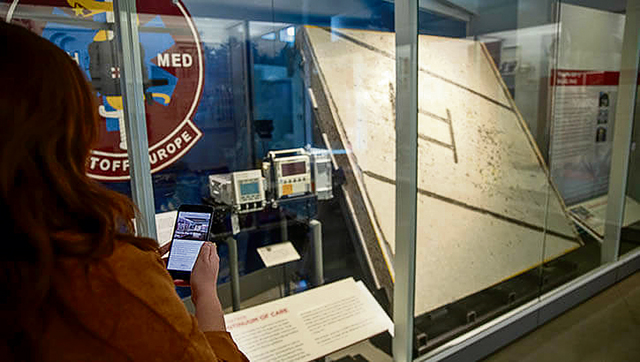
On May 21, 1862, Army Surgeon General William Hammond issued Circular No. 2: As it is proposed to establish in Washington, an Army Medical Museum, Medical officers are directed diligently to collect…all specimens of morbid anatomy, surgical or medical…; together with projectiles and foreign bodies removed, and such other matters as may prove of interest in the study of military medicine or surgery.”
From the development of the typhoid vaccine — U.S. Military Immunization: The Fight against Infectious Diseases On the NMHM website to the invention of the photomicrograph — Illuminating the History and Process of Photomicrography at the National Museum of Health and Medicine on the NMHM for the study of pathological specimens, the museum has been involved in the forefront of military medical research. Now, 160 years later, the Army Medical Museum is still collecting, researching, and informing on the study of military medicine as the National Museum of Health and Medicine.
As a repository detailing the history of military medical innovation and research, NMHM engages visitors with specimens and artifacts from the Civil War to modern-day combat support.
“Few of the nation’s more than thirty thousand museums reach the century mark; fewer still have had the privilege of caring for a collection as remarkable as this for 160 years,” museum director Adrianne Noe, Ph.D., said. “But this museum, even from its earliest days, was not one that focused exclusively on interpreting the past. Learning from it, of course; preserving it, always; but contributing it to the future of military medicine? That’s something that we are uniquely well-positioned to do, and we look forward to accomplishing that for the visitors and researchers for many more years. We’ll continue to do this with a dedicated professional staff and a cadre of generous and creative volunteers.”
In honor of the museum’s 160th birthday, NMHM will release a mobile app.
The museum experience has transformed since the beginning of the COVID-19 pandemic, compelling museums and other cultural institutions to adapt to the continually changing atmosphere in visitor engagement. One such change is the inclusion of a virtual environment Education page on the NMHM website. With the offering of virtual opportunities, to include events, tours, and exhibitsExhibits page on the NMHM, NMHM continues to engage visitors.
The app can be accessed on any mobile device and will provide viewers with additional content about the museum’s collections.
For example, the fractured tibia and fibula (lower leg bones) from Civil War Union general, Maj. Gen. Daniel E. Sickles: His Contribution to the Army Medical Museum on the NMHM website, and the type of cannonball that injured him are on display at the museum. The app will showcase supplementary imagery and link to articles and other resources to provide further context and enhance the visitor experience.
According to Andrea Schierkolk, museum public programs manager, “The mobile app will provide visitors with a more universal approach toward exploring the museum onsite or from remote locations. This hybrid approach will improve the visitor experience by making the museum’s exhibits, collections, and programs more accessible to a wider audience. App users will be able to listen to stories, watch videos, and look at images that will allow them to explore innovations in military medicine from a variety of perspectives.”
Plan your visit to NMHM on the NMHM website today at https://www.medicalmuseum.mil, and explore the app.







